The distinctive Mercedes Formula 1 front wing endplate design that appeared through much of last year was made illegal by the FIA for 2023.
Yet Mercedes has managed to create a similar effect on its new F1 car with a clever interpretation of the modified rules.
The regulations were conceived to create a smooth transition between the four planes of the front wing and the endplate. The F1 show car shows a simple interpretation of these regulations, creating a gentle upward curve as the front wing profiles blend into the vertical endplate.
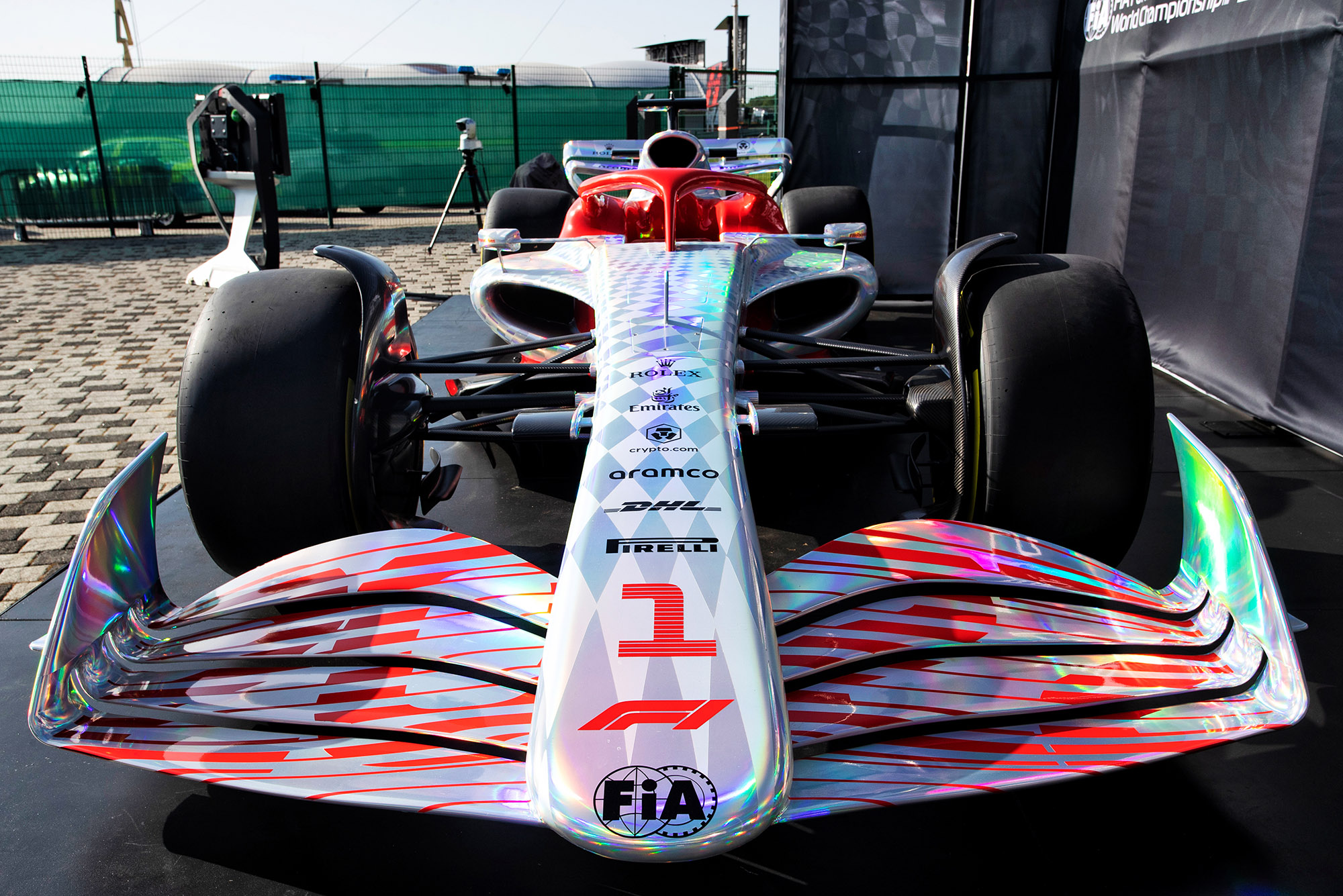
But at the Miami Grand Prix last April, Mercedes introduced a more complex version. This allowed for more outwash of the airflow around the outside of the front wheels while also creating the opportunity for vortex generation.
Effectively, this created a cutout (highlighted in yellow) in the front wing endplate the FIA did not want given the push to minimise outwash and its contribution to ‘dirty’ air.
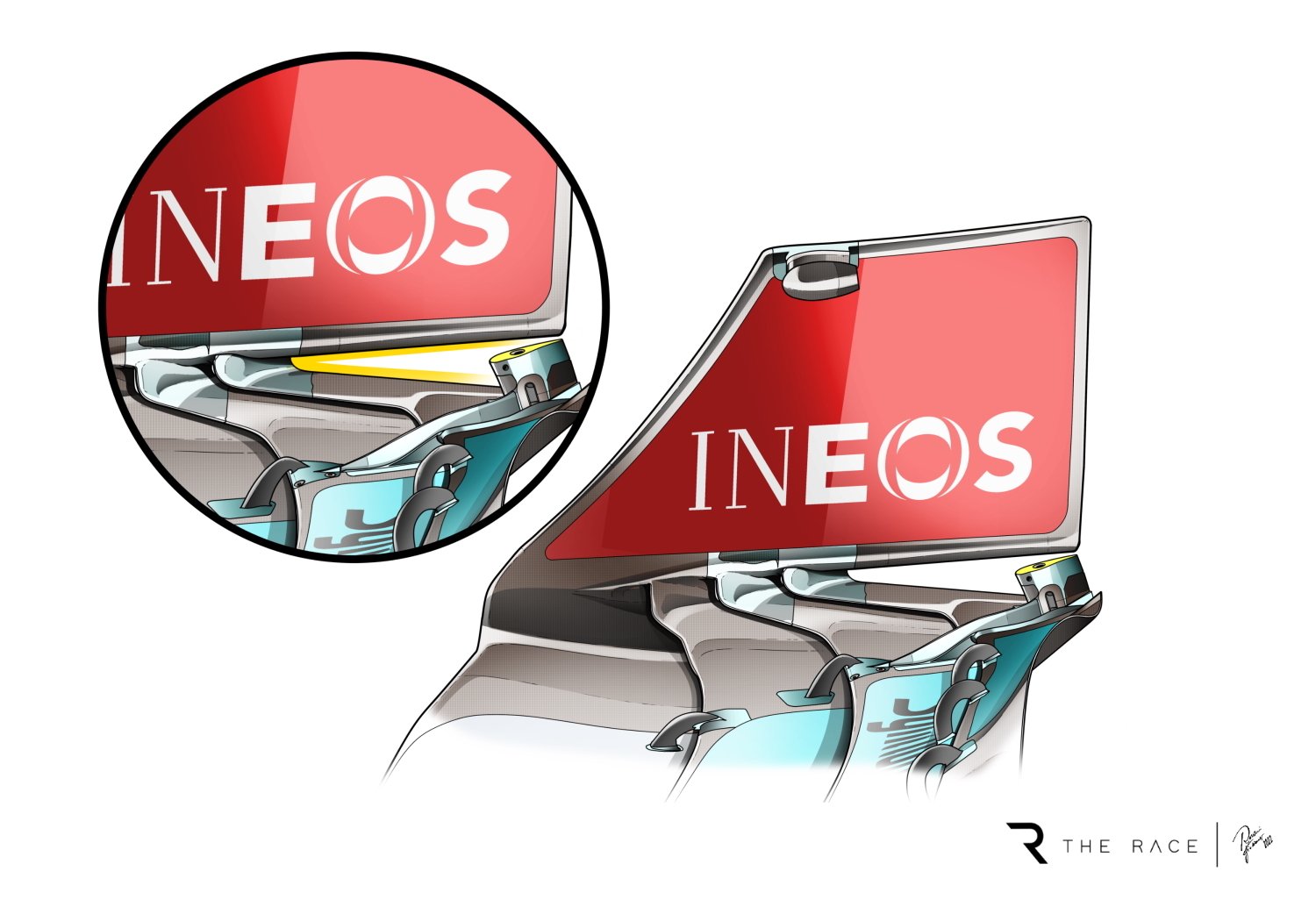
This was achieved by connecting the second, third and fourth front wing profiles to the endplate in a swept-forward style that joined the endplate in a forward position (in yellow) and created a large cutout in the low rear part of the endplate.
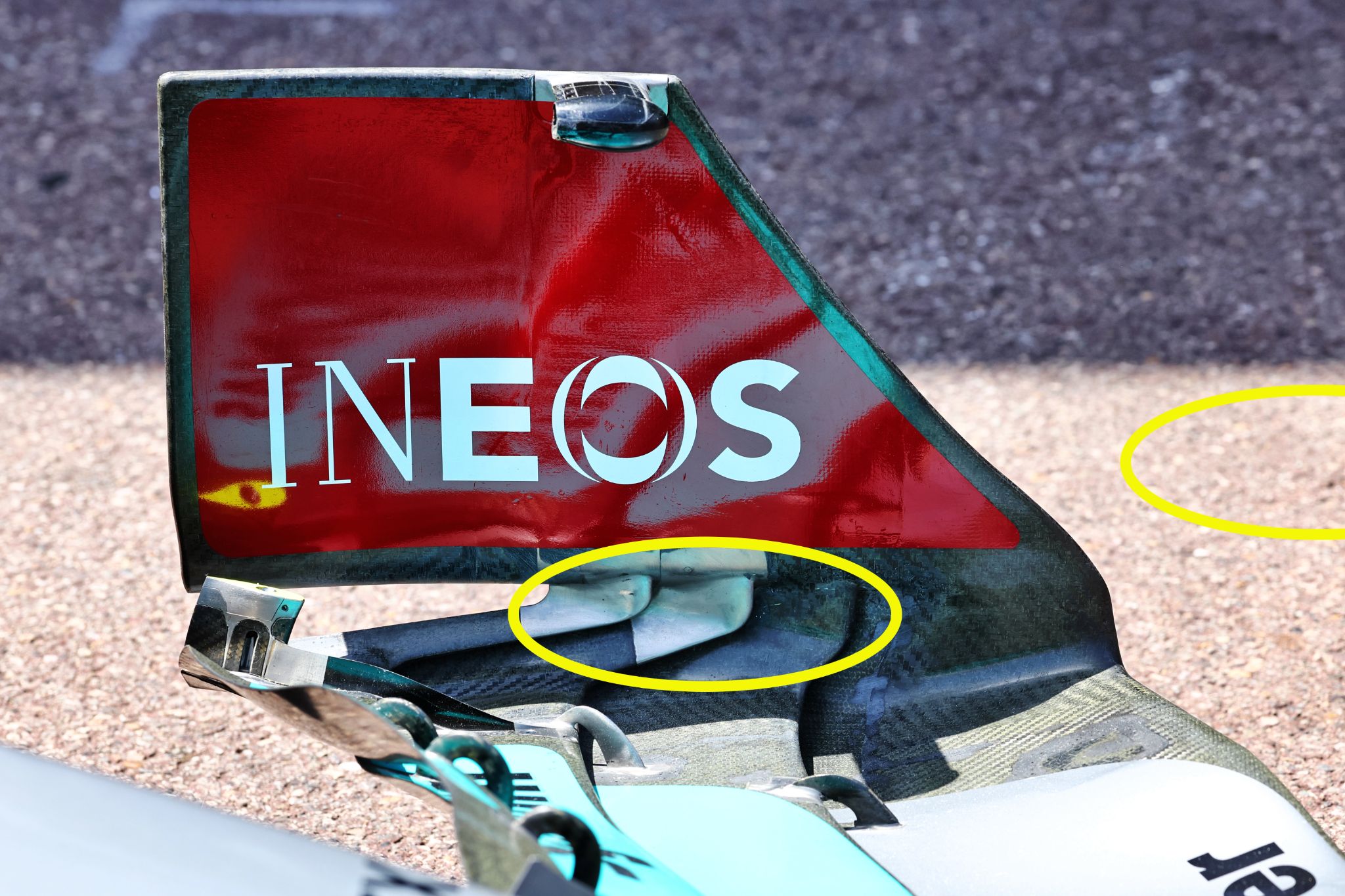
This was legal according to the regulations, so Mercedes was permitted to run it for the rest of the season while the rules were reformulated to outlaw such designs in 2023.
While this did successfully make the Mercedes 2022 design illegal, the modified rules left the door open for a design that achieved a similar effect, both creating outwash to help push some of the airflow around the outside of the front tyre and vortex generation.
Under the new technical regulations introduced last year, legality is defined using various reference sections, reference surfaces and reference volumes. These define what regulations apply where.
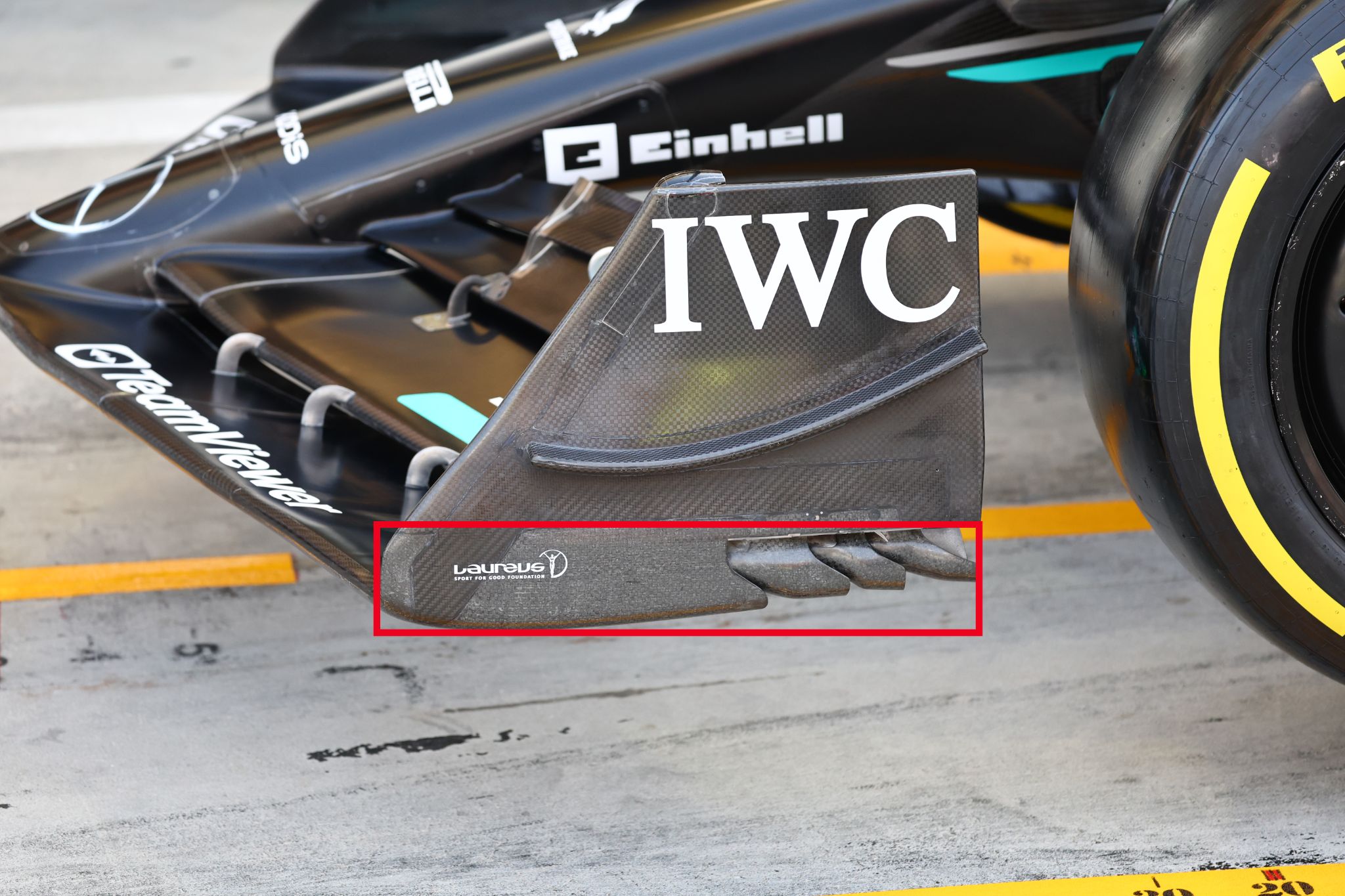
The front wing rules are formulated using four reference volumes and four reference surfaces. The key ones that apply in the case of the Mercedes endplate is RV-FW-TIP, which covers the bottom part of the endplate (approximately indicated in red above), and RV-FW-PROFILES, which along with the equivalent reference surface reg (RS-FW-PROFILES) is used to define the wing elements themselves. The rules governing these areas also dictate what is permitted in the transition between them.
There was a section in the 2022 technical regulations declaring that “the sole purpose of the external surfaces of the front wing tip is to create a smooth transition, with no discontinuities, between the front wing profiles and the front wing endplate body”. This was removed for the first issue of the 2023 regulations to allow for greater precision.
Instead, the additions to Article 3.9.3 dictated the orientation and location of the intersections between the front wing profiles and the endplate in detail. Specifically, these govern the second, third and fourth elements given the mainplane must transition solidly into the endplate. Apertures are not allowed, but gaps are by necessity allowed in the transitions between wing elements and endplate.
The changes made implemented various planes within which the intersections must lie that prevented the swept-forward design Mercedes had last year whereby the front wing profiles were connected to the endplate far forward and in a tightly-packed group.
There are also various exclusions to govern the gaps between them conceived to drastically limit the connection of the extreme outboard edge of the front wing profiles and the endplates.
What Mercedes opted to do is move the end of the front wing profiles slightly inboard then connect them to the endplate with narrow stays, which fulfils the requirement for continuity. These connect the profiles to the endplate and are designed to meet the tighter rules governing the positioning of that transition.
Those on the second and third front wing elements (in red) are straightforward connections. The one connecting the fourth element (in green) is more complex. This is an angled structure that then connects to a vane with a slightly downwash profile that connects to the endplate a little higher.
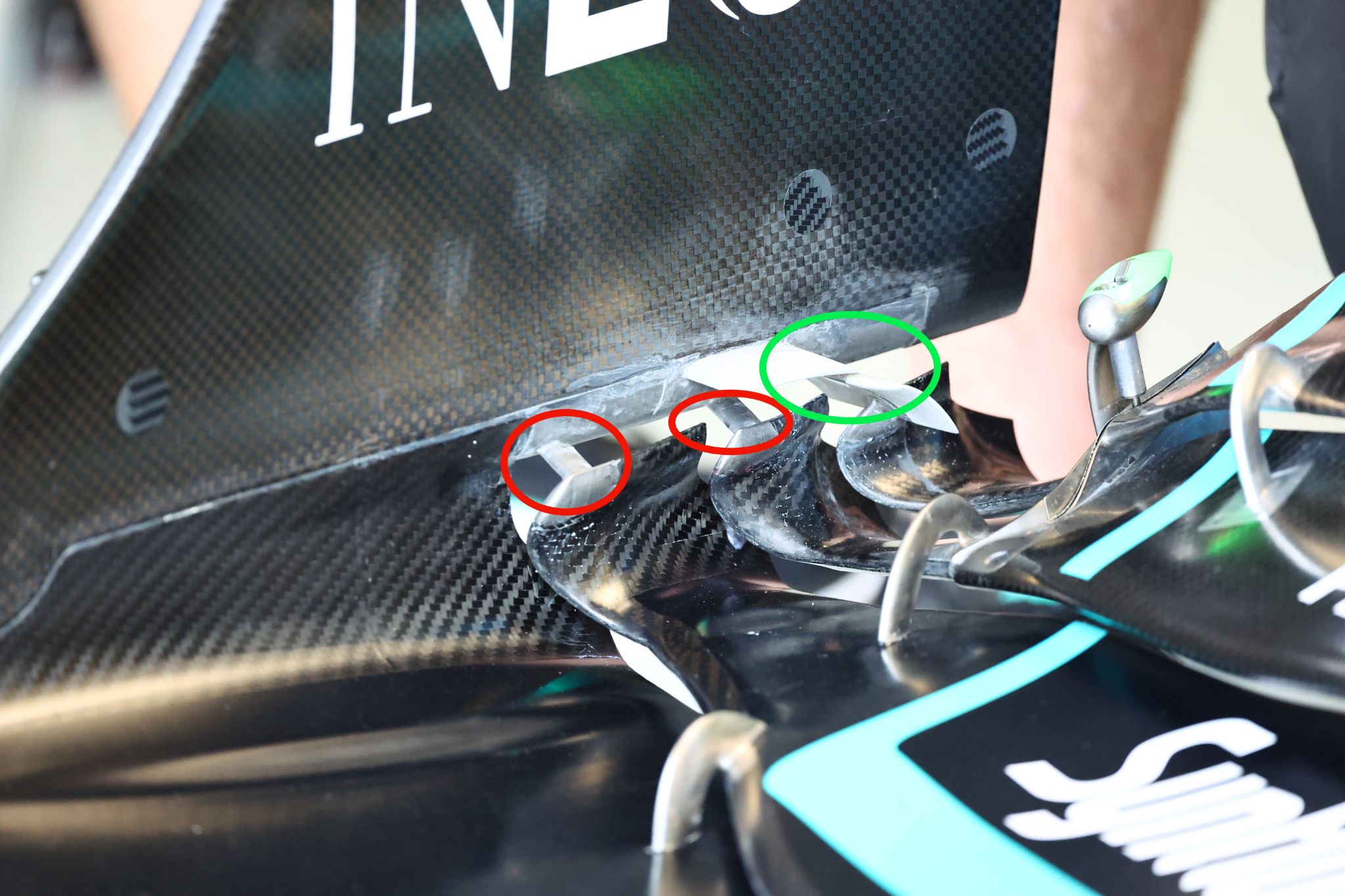
That effectively recreates the cutout the FIA had tried to remove while also creating vortices that can be channelled inside the front wheels and contributes to the various airflow structures that feed the underfloor and sidepods. Essentially Mercedes has responded to the rules putting new limits on where it could position certain elements of its wing design by finding a different space to place those elements so they still achieve the desired effect.
Proof, if any were needed, that now matter how much work the FIA puts into the regulations the teams, with their vast collective firepower, will always find ways to achieve designs the rulemakers intend to prevent.


